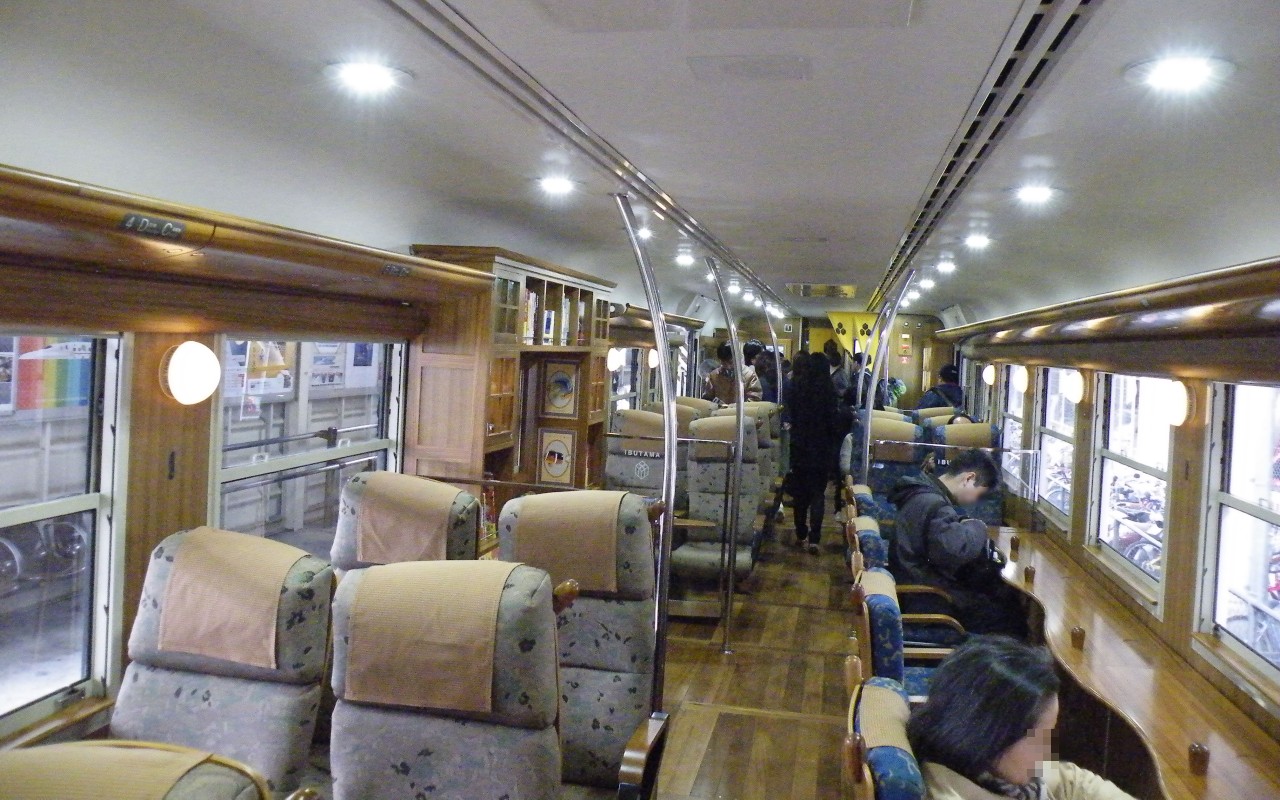|
Ibusuki No Tamatebako
The is a limited express service operated by Kyushu Railway Company (JR Kyushu) in Japan since March 2011. It operates between Kagoshima-Chūō Station and Ibusuki Station via the Ibusuki Makurazaki Line. Service pattern There are three return services per day. All trains stop at Kiire. Rolling stock The train was originally formed of two specially modified KiHa 47 diesel multiple unit cars, KiHa 47-8060 and KiHa 47-9079 (formerly KiHa 47-1079), based at Kagoshima Depot. The two cars were converted at JR Kyushu's Kokura Works. A third car, KiHa 140-2066, formerly used in the ''Hayato no Kaze'' DMU set, was rebuilt in 2012 to ''Ibusuki no Tamatebako'' style, entering service from 24 March 2012. File:JRK DC Kiha47-8060.jpg, Car 1: KiHa 47-8060 File:JRK DC Kiha47-9079.jpg, Car 2: KiHa 47-9079 File:JRK DC Kiha140 2066.jpg, Car 3: KiHa 140-2066 Exterior The train is painted black on the landward side, and white on the seaward side, with gold lining and lettering. Interior The ... [...More Info...] [...Related Items...] OR: [Wikipedia] [Google] [Baidu] |
Limited Express
A limited express is a type of express train service. It refers to an express service that stops at a limited number of stops in comparison to other express services on the same or similar routes. Japan The term "limited express" is a common translation of the Japanese compound noun ; literally "special express"; often abbreviated as . Although some operators translate the word differently, this section is about ''tokubetsu kyūkō'' trains in Japan regardless of the translation by the operators. This term also includes terms with ''limited express'' in them, such as . There are two types of limited express trains: intercity and commuter. The former type of limited express trains generally use long-distance coaches, equipped better than other ordinary express trains, including reserved seating, dining cars or food and beverage carts, and "green cars" (first class cars). The latter type of limited express train usually incurs no surcharge, but seating is usually first-come, f ... [...More Info...] [...Related Items...] OR: [Wikipedia] [Google] [Baidu] |
Japan Railfan Magazine
is a Japanese-language monthly magazine for railfans covering the mainly Japanese railways published by Koyusha. It has been published in Japan since 1961. Issues go on sale on the 21st of each month, two months before the cover month (e.g. the March issue is on sale on the 21st of January). Each copy sells for between ¥1,100 and ¥1,200 depending on the number of pages. The magazine reports on railway prototypes, complete with technical plans, photos, maps, graphs, and tables. See also * List of railroad-related periodicals A ''list'' is any set of items in a row. List or lists may also refer to: People * List (surname) Organizations * List College, an undergraduate division of the Jewish Theological Seminary of America * SC Germania List, German rugby unio ... External links * 1961 establishments in Japan Magazines published in Japan Monthly magazines published in Japan Magazines established in 1961 Railway culture in Japan Rail transport magazines ... [...More Info...] [...Related Items...] OR: [Wikipedia] [Google] [Baidu] |
Railway Services Introduced In 2011
Rail transport (also known as train transport) is a means of transport that transfers passengers and goods on wheeled vehicles running on rails, which are incorporated in tracks. In contrast to road transport, where the vehicles run on a prepared flat surface, rail vehicles (rolling stock) are directionally guided by the tracks on which they run. Tracks usually consist of steel rails, installed on sleepers (ties) set in ballast, on which the rolling stock, usually fitted with metal wheels, moves. Other variations are also possible, such as "slab track", in which the rails are fastened to a concrete foundation resting on a prepared subsurface. Rolling stock in a rail transport system generally encounters lower frictional resistance than rubber-tyred road vehicles, so passenger and freight cars (carriages and wagons) can be coupled into longer trains. The operation is carried out by a railway company, providing transport between train stations or freight customer facili ... [...More Info...] [...Related Items...] OR: [Wikipedia] [Google] [Baidu] |
